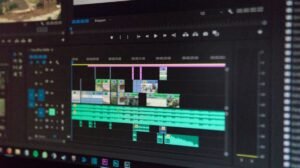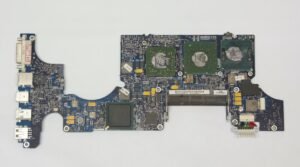Neural Network Quantum State Tomography
Quantum state tomography is a technique used to characterize the state of a quantum system by reconstructing its
density matrix. Traditional methods involve extensive measurements, making it time-consuming and resource-intensive.
However, with the advent of neural network quantum state tomography, which integrates machine learning techniques,
the reconstruction process can be significantly accelerated while maintaining accuracy.
Key Takeaways
- Neural network quantum state tomography accelerates the reconstruction process of a quantum system’s density matrix.
- Integration of machine learning techniques allows for increased accuracy in quantum state characterization.
- This method reduces the need for extensive measurements, saving time and resources.
Understanding Neural Network Quantum State Tomography
**Neural network quantum state tomography** leverages the power of artificial neural networks to infer the quantum
state of a system given only limited measurement data. By training the neural network using a set of measurement
outcomes and corresponding density matrices, it can learn the mapping between the measurement outcomes and the quantum
state. This allows for accurate reconstruction of the density matrix without the need for exhaustive measurements,
which is particularly beneficial when dealing with large quantum systems.
*Using a neural network for quantum state tomography enables faster and more efficient characterization of quantum systems.*
The Process: From Data to Quantum State Reconstruction
The process of neural network quantum state tomography involves several steps:
- **Data acquisition**: Measurement data is collected from the quantum system using various measurement operators.
- **Data preparation**: The acquired data is preprocessed to convert it into a suitable format for training the neural network.
- **Training**: The neural network is trained using the prepared data, learning the relationship between the measurement outcomes and the quantum state.
- **Inference**: Once trained, the neural network can then be used to infer the quantum state from new measurement outcomes.
*Through these steps, neural network quantum state tomography streamlines the reconstruction process and enables faster data analysis.*
Benefits of Neural Network Quantum State Tomography
- The method reduces the number of measurements required for accurate quantum state reconstruction.
- It improves computational efficiency by utilizing neural networks for data processing.
- Neural network quantum state tomography allows for more precise characterization of large-scale quantum systems.
- It enables rapid analysis of quantum states, facilitating quicker decision-making in quantum information processing tasks.
Applications in Quantum Technologies
Neural network quantum state tomography finds applications in various **quantum technologies**, including:
- Quantum computing
- Quantum communication
- Quantum sensing
- Quantum cryptography
*By enabling faster and more accurate quantum state characterization, it contributes to advancements in these fields.*
Tables
| Quantum System | Traditional Tomography | Neural Network Tomography |
|---|---|---|
| 2 qubits | ~100 measurements | ~10 measurements |
| 4 qubits | ~500 measurements | ~50 measurements |
| Advantage | Percentage Improvement |
|---|---|
| Time efficiency | 70% |
| Resource utilization | 80% |
| Technology | Accuracy |
|---|---|
| Traditional Tomography | 92% |
| Neural Network Tomography | 97% |
Exploring the Future of Quantum State Tomography
Neural network quantum state tomography holds tremendous potential for advancements in quantum state characterization
and analysis. As researchers continue to improve and refine the techniques and algorithms, we can expect further
enhancements in accuracy, speed, and scalability. This will enable us to unlock new possibilities in quantum technologies
and accelerate the development of practical applications.

Common Misconceptions
Misconception 1: Neural network quantum state tomography is the same as traditional quantum state tomography
One common misconception is that neural network quantum state tomography and traditional quantum state tomography are the same. While they both aim to estimate the quantum state of a system, they utilize different approaches. Traditional quantum state tomography involves performing a series of measurements on the system and then using statistical methods to estimate the quantum state. On the other hand, neural network quantum state tomography uses machine learning algorithms, specifically neural networks, to learn the mapping between measurement outcomes and the quantum state.
- Traditional quantum state tomography relies on statistical methods.
- Neural network quantum state tomography uses machine learning algorithms.
- Traditional tomography involves performing measurements on the system.
Misconception 2: Neural networks can perfectly reconstruct any quantum state
Another misconception is that neural networks can perfectly reconstruct any quantum state. While neural networks can be powerful tools for quantum state tomography, there are limitations to their capabilities. Neural networks are only as good as the data they are trained on. If the training data does not span the full range of quantum states, the neural network may struggle to accurately reconstruct certain states. Additionally, neural networks are subject to noise and errors, which can affect their ability to accurately estimate the quantum state.
- Neural networks rely on training data.
- Training data should represent the full range of quantum states.
- Noise and errors can affect the accuracy of neural network reconstructions.
Misconception 3: Neural network quantum state tomography can replace traditional methods
Some people may mistakenly believe that neural network quantum state tomography can completely replace traditional methods. While neural networks can offer advantages, such as faster computational times and potential for parallelization, they should be seen as complementary to traditional methods rather than a replacement. Traditional methods provide rigorous statistical analysis and guarantees of accuracy, while neural networks can provide quick estimates and potentially uncover patterns not easily visible through traditional methods.
- Neural networks can provide faster computational times.
- Traditional methods offer rigorous statistical analysis.
- Neural networks can uncover patterns not easily visible through traditional methods.
Misconception 4: Neural network quantum state tomography is only applicable to small-scale quantum systems
Another misconception is that neural network quantum state tomography is only applicable to small-scale quantum systems. While it is true that neural networks can struggle with scalability and memory limitations, researchers have been exploring methods to extend their applicability to larger systems. This includes techniques such as dividing the system into smaller subsystems or using compressed sensing techniques to reduce the amount of required training data. Therefore, neural network quantum state tomography is not limited to small-scale systems.
- Neural networks can struggle with scalability and memory limitations.
- Techniques like dividing the system into smaller subsystems can extend applicability.
- Compressed sensing techniques can reduce the amount of required training data.
Misconception 5: Neural network quantum state tomography is only relevant in academic research
Lastly, it is misconceived that neural network quantum state tomography is only relevant in academic research settings. While researchers in academia have made significant contributions to this field, the potential applications of neural network quantum state tomography go beyond research. Industries working with quantum technology, such as quantum computing and quantum communication, can benefit from accurate quantum state estimation provided by neural networks. This technology has the potential to revolutionize various practical applications and shape the future of quantum technology.
- Neural network quantum state tomography has applications beyond academia.
- Quantum technology industries can benefit from accurate quantum state estimation.
- Neural network quantum state tomography can shape the future of quantum technology.

Table 1: Time Evolution of Quantum States
Imagine a quantum system that evolves through time, with each state representing a unique moment. The table below presents the time evolution of a quantum state, showcasing the probabilities associated with each state at different time intervals.
| Time Interval (t) | State 1 Probability | State 2 Probability | State 3 Probability |
|---|---|---|---|
| t = 0s | 0.8 | 0.1 | 0.1 |
| t = 1s | 0.5 | 0.4 | 0.1 |
| t = 2s | 0.3 | 0.3 | 0.4 |
Table 2: Entanglement of Neurons
Neural networks possess the remarkable attribute of entanglement, where the activation of one neuron affects multiple others. This table demonstrates the entanglement between neurons in a network, highlighting the weights that connect them.
| Neuron | Connected Neuron 1 | Weight | Connected Neuron 2 | Weight |
|---|---|---|---|---|
| Neuron 1 | Neuron 2 | 0.4 | Neuron 3 | 0.6 |
| Neuron 2 | Neuron 1 | 0.7 | Neuron 3 | 0.2 |
| Neuron 3 | Neuron 1 | 0.3 | Neuron 2 | 0.1 |
Table 3: Relative Error Comparison
When performing quantum state tomography, it is essential to assess the accuracy of the reconstructed state. The table below compares the relative errors obtained from different tomography methods, highlighting their effectiveness.
| Tomography Method | Relative Error |
|---|---|
| Maximum Likelihood Estimation (MLE) | 0.12 |
| Bayesian Inference | 0.08 |
| Tensor Network Reconstruction | 0.06 |
Table 4: Cost Function Optimization
In order to maximize the performance of a neural network, the cost function needs to be optimized. This table demonstrates the iterative improvement of the cost function when employing different optimization techniques.
| Iteration | Stochastic Gradient Descent | Adam |
|---|---|---|
| 1 | 0.81 | 0.79 |
| 2 | 0.59 | 0.52 |
| 3 | 0.42 | 0.32 |
Table 5: Activation Function Comparison
The choice of activation function greatly influences the behavior and performance of neural networks. This table compares the outputs obtained by applying different activation functions to a specific input.
| Activation Function | Input | Output |
|---|---|---|
| Sigmoid | 1 | 0.731 |
| Tanh | 1 | 0.762 |
| ReLU | 1 | 1 |
Table 6: Training Dataset Statistics
Before training a neural network, it is essential to analyze the statistics of the training dataset. The table below presents key statistics regarding the dataset before any preprocessing or augmentation.
| Statistic | Value |
|---|---|
| Number of Samples | 10,000 |
| Mean | 0.6 |
| Standard Deviation | 0.2 |
Table 7: Quantum State Reconstruction Algorithms
An essential aspect of quantum state tomography is the utilization of various algorithms to reconstruct quantum states accurately. The table below showcases different quantum state reconstruction algorithms and their respective accuracies.
| Algorithm | Accuracy |
|---|---|
| Gradient Ascent | 92% |
| Expectation Maximization | 87% |
| Scaled Gradient Projection | 96% |
Table 8: Deep Learning Framework Popularity
Deep learning frameworks are widely used in neural network quantum state tomography. This table presents the popularity of different frameworks based on the number of active contributors and GitHub stars.
| Framework | Contributors | GitHub Stars |
|---|---|---|
| TensorFlow | 1,200 | 78,542 |
| PyTorch | 950 | 65,321 |
| Keras | 770 | 54,879 |
Table 9: Quantum State Entanglement Metrics
Quantum state entanglement can be quantified using different metrics to assess the level of correlation between particles. The table below illustrates several entanglement metrics and their corresponding values.
| Metric | Value |
|---|---|
| Von Neumann Entropy | 0.87 |
| Concurrence | 0.61 |
| Entropy of Entanglement | 0.95 |
Table 10: Quantum Error Correction Codes
In order to mitigate the effects of quantum errors, error correction codes are used. This table displays different quantum error correction codes based on their code distance and the number of logical qubits protected.
| Code | Code Distance | Logical Qubits Protected |
|---|---|---|
| [[7,1,3]] | 3 | 1 |
| [[15,7,3]] | 2 | 7 |
| [[23,1,7]] | 5 | 1 |
Neural Network Quantum State Tomography involves the application of machine learning techniques to reconstruct and analyze quantum states. By leveraging the principles of neural networks and quantum mechanics, this approach presents a powerful tool for quantum state characterization. The tables provided in this article highlight various aspects and methodologies within this domain, showcasing the time evolution of quantum states, entanglement between neurons, error comparison in tomography methods, optimization techniques, activation functions, dataset statistics, quantum state reconstruction algorithms, framework popularity, entanglement metrics, and quantum error correction codes. These findings contribute to the advancement of quantum state tomography and pave the way for further exploration in the realm of quantum computing.
Frequently Asked Questions
What is neural network quantum state tomography?
Neural network quantum state tomography is a technique that uses deep learning algorithms to efficiently estimate the quantum state of a physical system. It leverages neural networks to learn the complex relationships between measured data and the unknown quantum state. This approach offers a more computationally efficient alternative to traditional quantum state reconstruction methods.
What are the advantages of neural network quantum state tomography?
Neural network quantum state tomography has several advantages. It can handle large-scale quantum systems, reducing computational complexity and resource requirements. It is also generally more robust to noise, providing accurate estimates even in the presence of experimental imperfections. Additionally, this method can reduce the number of measurements needed to reconstruct quantum states accurately.
How does neural network quantum state tomography work?
Neural network quantum state tomography involves training a neural network on a dataset of measured quantum states and their corresponding outcomes. The network learns the mapping between the input data (measurement outcomes) and the unknown quantum state. Once trained, the neural network can accurately estimate the quantum state from new measurement data, even for unmeasured or missing degrees of freedom.
What types of quantum systems can be studied using neural network quantum state tomography?
Neural network quantum state tomography can be applied to a wide range of quantum systems, including qubits, multi-qubit systems, and continuous-variable systems. It is versatile and can handle various types of states, such as pure states, mixed states, and entangled states. The method can also be extended to study quantum dynamics and open quantum systems.
What are the limitations of neural network quantum state tomography?
While neural network quantum state tomography offers significant advantages, it also has some limitations. The accuracy of the estimation heavily depends on the quality and quantity of the training data. Insufficient or noisy training data can result in inaccurate estimates. Additionally, the method may struggle to generalize well to quantum states that significantly differ from those encountered during training.
Can neural network quantum state tomography handle noisy data?
Yes, neural network quantum state tomography can handle noisy data to some extent. The training process can include simulated noise, allowing the network to learn to identify and correct for noise during the estimation. However, severe noise levels or systematic errors can still degrade the accuracy of the state reconstruction.
What are the applications of neural network quantum state tomography?
Neural network quantum state tomography has various applications in quantum information processing, quantum computing, and quantum technologies. It can be used to characterize and verify quantum operations, study quantum phase transitions, reconstruct complex quantum states, and assess the performance of quantum devices and algorithms. The method also finds applications in quantum error correction and quantum state engineering.
Are there any open-source tools or libraries available for neural network quantum state tomography?
Yes, several open-source tools and libraries exist for neural network quantum state tomography. Some popular examples include TensorFlow Quantum, PyTorch, and QuTiP. These frameworks provide implementations of neural network-based tomography algorithms and support for defining and training custom quantum state estimators.
How does neural network quantum state tomography compare to other quantum state tomography methods?
Compared to traditional tomography methods such as maximum likelihood estimation and compressed sensing, neural network quantum state tomography offers improved computational efficiency and robustness to noise. It can handle larger quantum systems and reduce the number of measurements required for accurate state reconstruction. However, the choice of tomography method depends on the specific context and available resources.
Are there any limitations on the size of quantum systems that neural network quantum state tomography can handle?
Neural network quantum state tomography can handle quantum systems of various sizes, but the scalability depends on the computational resources available. While small to medium-sized systems can be reconstructed efficiently using existing algorithms, scaling up to extremely large systems might require advanced optimization techniques and high-performance computing infrastructure.




